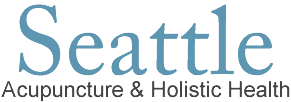
Traditional Chinese Medicine (TCM) is highly effective for treating lactation problems and without negative side effects. It is a system of medicine deriving from East Asia that is thousands of years old: it includes acupuncture, Chinese herbal medicine, massage, nutrition, lifestyle guidance and less-known treatment modalities such as cupping and moxibustion. Depending on your specific diagnosis, one or several of these healing modalities will be part of your treatment protocol. Choosing a practitioner who is experienced treating women during pregnancy and post-partum is important if you are facing lactation challenges.
In TCM lactation disorders fall into two distinct categories: low milk supply or milk not flowing. Mastitis makes up a third category that I will explain later. Low milk supply is a diagnosis of insufficient energy (called Chi) and blood supply in the mother. Milk not flowing or problems with let-down are diagnosed as stagnation of energy (chi) preventing milk from moving down the ducts and out of the nipple. It is not unusual for a mother to have a combination of deficiency (lack of energy and blood) and stagnation (unable to let-down or express the milk) at the same time.
In TCM it is understood that a woman’s menstrual blood is converted into breast milk once her baby is born. This is the same blood that was going to the placenta prior to birth. Energy (chi) is required to convert her blood into milk, and blood itself is required to become the milk. A predisposition toward anemia or blood loss during delivery can result in a low supply of the mother’s blood resulting in poor milk supply. Exhaustion due to labor and sleep deprivation can prevent the mother’s body from producing milk because there is not enough energy to generate the milk.
When chi (energy) and blood supply is deficient causing low milk supply, the treatment plan will include acupuncture, possibly an herbal prescription and nutritional guidance. Nutrition is a very important component of the treatment for low milk supply. Any food that is good for the production of blood in the mother will help with milk supply. This includes organic red meats, fish, eggs, and collagen-rich soups made from ham-hocks or chicken with the skin included in the soup stock. When nursing, it is especially important for a mother to eat organic and free-range meats and poultry if possible. If the mother is vegetarian, a protein-rich diet is important. Milk Makers cookies to support milk supply are an excellent daily addition to the diet of a woman with chi and blood deficiency because the cookies include specific ingredients that help increase her chi (energy) and blood production, thereby increasing milk supply. A TCM practitioner who is experienced treating breastfeeding patients will go over additional nutritional advice extensively with you.
Stagnation or blockage of energy (chi) in and around the breasts prevents the milk from flowing and impairs let-down. Stagnation can lead to breast fullness, distension, pain, pressure and engorgement. Stagnation is also a cause of mastitis. In TCM the primary cause of this blockage is emotional: feelings of being stressed-out, anger, resentment, frustration and depression. These emotions cause stagnation of the energy of the liver energy channel. In TCM the liver channel controls the woman’s nipple function and also can facilitate or block the flow of energy and by extension milk in the surrounding energy channels and ducts in the breast. Stagnation causing problems with let-down and milk flow is treated most effectively with acupuncture, massage therapy and by keeping the mother away from any sources of emotional stress.
Mastitis is a combination of stagnation of chi, blood and milk in combination with infection. Combining Western medicine with TCM to treat mastitis is more effective than Western medicine by itself. Antibiotics prescribed by your physician will clear up the infection, and a combination of acupuncture, massage, herbs and medicinal compresses for the breast can alleviate the blocked chi and blood and milk in the breast, thereby reducing engorgement and inflammation. Herbal prescriptions can be combined safely with antibiotics as a treatment protocol and are also safe for the breastfeeding infant. In addition to the above mentioned treatments, expressing milk as often as possible either manually, via nursing, or with a pump is very crucial in the successful treatment of mastitis.
Whatever your particular breastfeeding challenge is, consulting with a professional lactation consultant is helpful. I recommend finding a qualified IBCLC.
If you have any questions about Traditional Chinese Medicine and lactation please don’t hesitate to contact me online at www.seattleacupuncture.com
